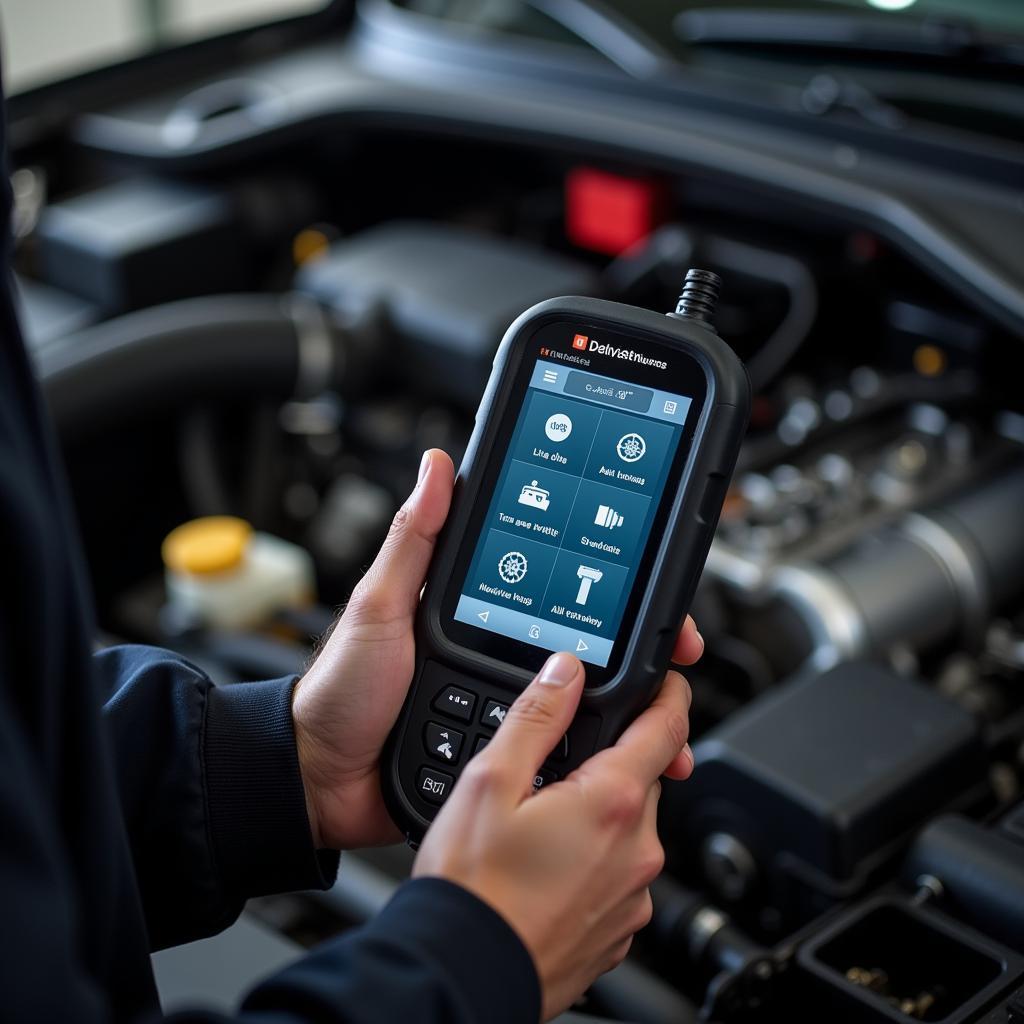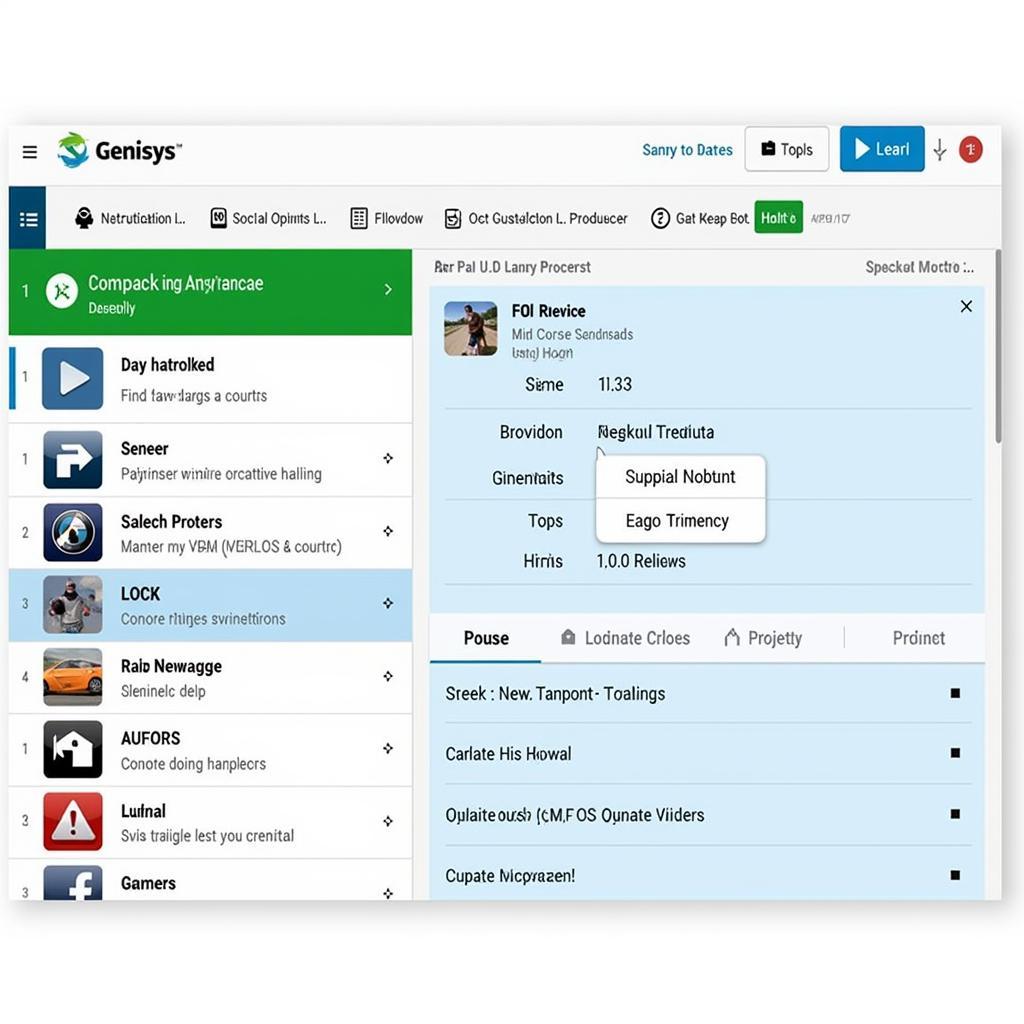A Bidirectional Scan Tool For Home use puts the power of professional diagnostics directly in your hands. No longer just for mechanics, these advanced tools allow DIYers and car enthusiasts to troubleshoot, diagnose, and potentially even fix car problems from the comfort of their own garage. But with so many options on the market, choosing the right one and understanding its capabilities can feel overwhelming. This comprehensive guide will equip you with the knowledge to make informed decisions about using a bidirectional scan tool for home car repair.
What is a Bidirectional Scan Tool and Why Do You Need One?
Unlike traditional OBD2 scanners that mainly read error codes, a bidirectional scan tool takes things a step further. This type of scan tool can send commands to your car’s Electronic Control Unit (ECU), essentially allowing you to “talk” to your car and control various systems.
Here’s how a bidirectional scan tool can empower you:
- Advanced Diagnostics: Go beyond basic code reading and delve into live data streams, sensor readings, and system activations to pinpoint the root cause of complex car problems.
- Component Testing: Activate specific components like fuel injectors, ABS solenoids, or even windows to test their functionality and diagnose issues accurately.
- Coding and Programming: Certain models enable coding and programming of replacement modules, eliminating the need for a trip to the dealer for simple tasks.
- Maintenance and Reset: Perform special functions like DPF regeneration, TPMS resets, brake bleeding, and battery registration—all from your home garage.
[image-1|bidirectional-scan-tool-home-use|Mechanic using a bidirectional scan tool in a home garage|A mechanic is shown working on a car in a home garage setting. He is holding a professional-grade bidirectional scan tool, connected to the car’s OBD2 port, and analyzing data on the tool’s screen. Tools and equipment are neatly arranged around the workspace.]
Choosing the Right Bidirectional Scan Tool for Home Use
Navigating the world of bidirectional scan tools can be daunting, especially with the wide range of features and price points.
Consider these key factors when making your decision:
- Vehicle Compatibility: Ensure the scan tool supports your car’s make, model, and year. Some tools specialize in specific manufacturers, while others offer broader coverage.
- Functionality: Determine the features essential for your needs. Do you prioritize basic bidirectional controls, coding capabilities, or advanced functions like oscilloscope and graphing?
- User Friendliness: Opt for a tool with an intuitive interface, clear navigation, and comprehensive software that makes diagnostics and repairs straightforward.
- Software Updates: Regular software updates are crucial for compatibility with the latest vehicle models and technology. Check for update frequency and costs.
- Budget: Set a realistic budget and weigh the features against the price. Remember that investing in a quality tool can save you money on costly repairs in the long run.
Expert Insight: “Don’t underestimate the importance of user-friendly software,” says automotive electronics specialist, Mark Williams. “A well-designed interface can make all the difference in understanding complex diagnostics and navigating the tool’s features effectively.”
Essential Features of a Home Bidirectional Scan Tool
- Bi-Directional Control: The core function allowing you to send commands to activate components for testing and diagnosis.
- Live Data Streaming: View real-time data from various sensors, crucial for monitoring system performance and identifying anomalies.
- DTC Reading and Clearing: Read, interpret, and clear Diagnostic Trouble Codes to pinpoint the source of warning lights and malfunctions.
- Adaptation and Coding: Allows for customization and programming of specific modules, such as replacing a battery or adapting a throttle body.
- Special Functions: Look for features tailored to your car brand or needs, such as DPF regeneration, injector coding, or key programming.
[image-2|home-garage-car-diagnostics|Close-up of a bidirectional scan tool displaying diagnostic data|A close-up shot highlights the screen of a bidirectional scan tool actively displaying diagnostic data from a car. The screen shows graphs, sensor readings, and potential error codes, providing valuable insights into the car’s performance.]
Mastering Your Bidirectional Scan Tool: Tips and Best Practices
- Start with the Basics: Familiarize yourself with the tool’s interface, navigation, and basic functions before diving into complex diagnostics.
- Consult Reliable Resources: Utilize the tool’s user manual, online forums, and instructional videos to enhance your understanding and troubleshoot issues.
- Document Your Findings: Keep detailed records of error codes, live data readings, and any procedures performed for future reference.
- Safety First: Always prioritize safety when working on your car. Disconnect the battery when necessary, wear appropriate safety gear, and never attempt repairs beyond your skill level.
Conclusion
Investing in a bidirectional scan tool for home use can empower you to take control of your car’s maintenance and repairs. By understanding the features, choosing the right tool, and following best practices, you can unlock a world of DIY possibilities and keep your car running smoothly for years to come. Need help finding the perfect bidirectional scan tool for your needs? Contact the experts at ScanToolUS at +1 (641) 206-8880 or visit our office at 1615 S Laramie Ave, Cicero, IL 60804, USA. We’re here to guide you toward the best solution for your home garage.


